
Rediscovering Japan

Rediscovering Japan
Travel (Fukushima (Shiramizu Amida-do))

by tomizuta
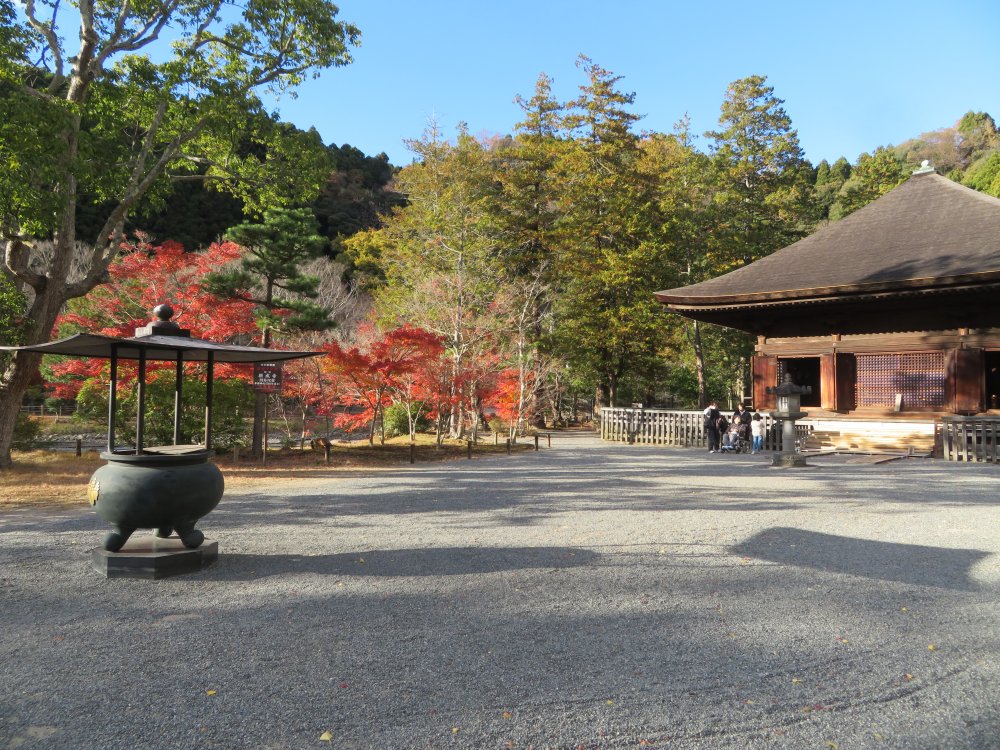
Once past the admission office, the Amida-do comes into sight directly in front on the other side of a bridge. The maple tree leaves had all turned beautifully red.
In late November 2023, I went to visit Hiraizumi for the first time in forty years. One focus of my visit was to reinforce my understanding of Jodo Teien (paradise gardens, or Pure Land gardens). Jodo Teien is a style of Buddhist temple garden, typically with an Amida-do and a pond, in an attempt to reproduce the Pure Land (Jodo) on this earth. This was rooted in the pessimistic view that the world had entered into a decadent era for Buddhism from the middle of the 11th century, as Japan edged towards the end of the Heian Period, testified by increasing battles between rising samurai clans, frequent droughts, famine and epidemics. It was widely believed that the only way people could be saved was to seek benevolence of Amida Nyorai (Amitabha Tathagata). This is the background for the creation of Jodo Teiens from the middle of the 11th century to the 12th century. The earliest example of a Jodo Teien is that of Uji Byodo-in in Uji, Kyoto Prefecture, completed in 1052, which has been designated as a World Heritage site in addition to the national treasure designation. As it is a long drive to Hiraizumi from the Kanto Region, I decided to stay one night in Fukushima Prefecture and pay a visit to the Shiramizu Amida-do, the only national treasure in Fukushima, together with its Jodo Teien.
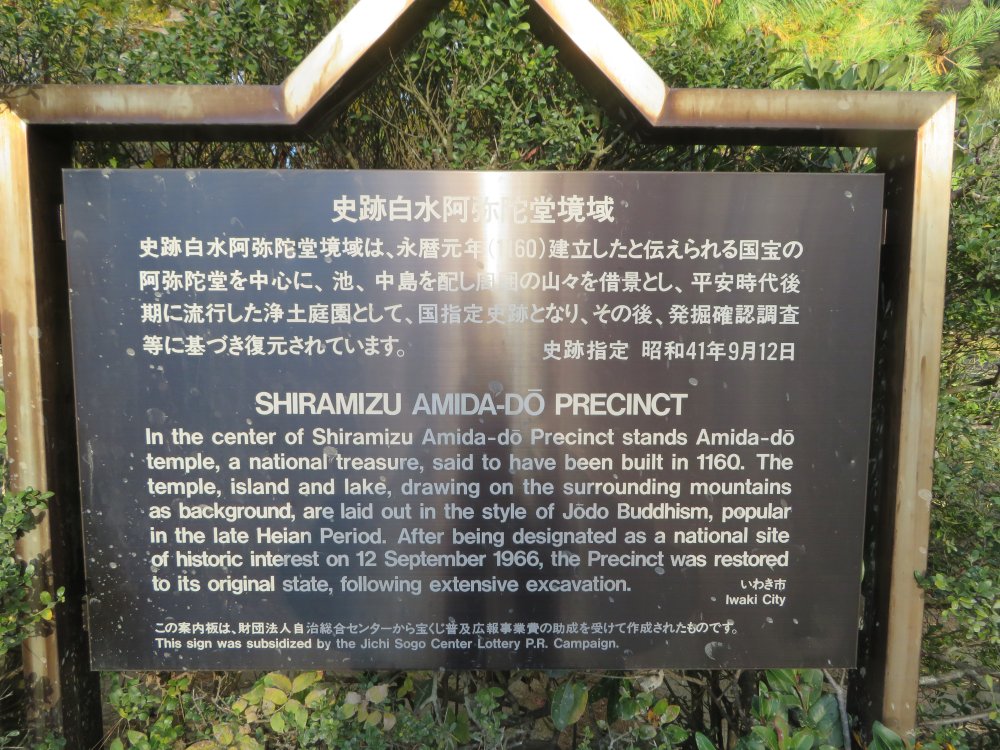
The description of Shiramizu Amida-do at the corner of the car park.
I arrived at the car park of Shiramizu Amida-do at about 2pm. The Amida-do
is the property of Ganjo-ji of the Buddhist Shingon sect, but most of the
pond area of the Jodo Teien, where the Amida-do is located is owned and
managed by Iwaki City. Ganjo-ji was founded in 1160 under the wish of Toku-hime,
a Fujiwara Family princess that became the wife of Norimichi Iwaki, the
lord of the Iwaki area. According to the pamphlet of Shiramizu Amida-do,
Tokuhime was the daughter of Kiyohira, the founder of the Tohoku Fujiwara
Family, but there seem to be other views, such as that she was the granddaughter
of Kiyohira. In any event, after her husband died, she had the Amida-do
constructed together with the Jodo Teien.
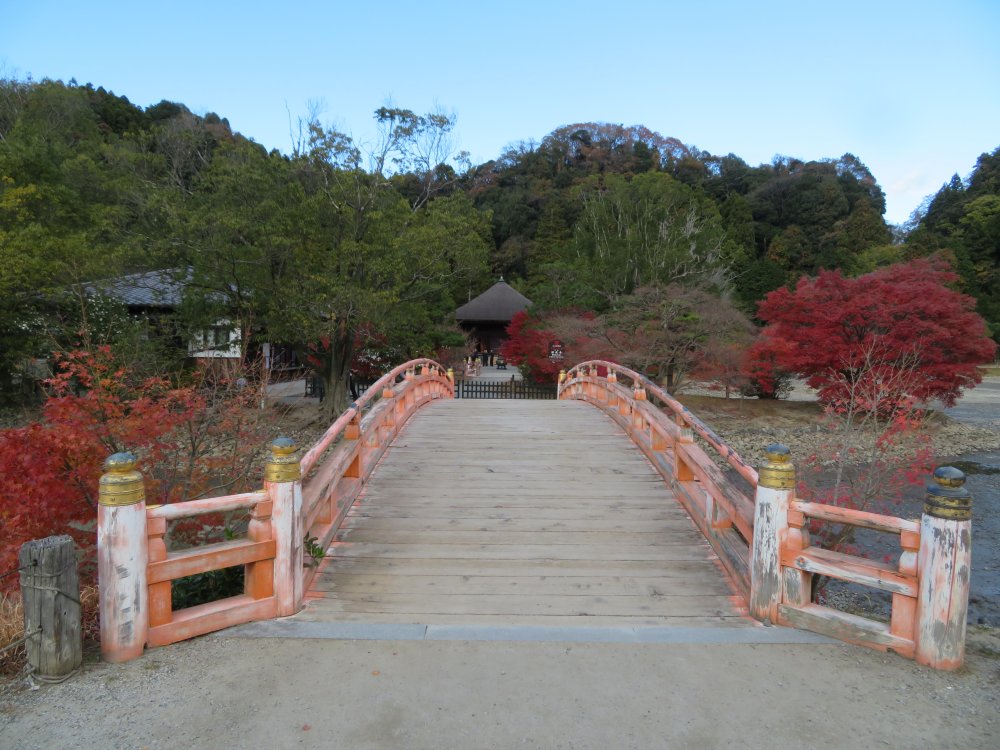
From the car park, we crossed a red bridge to come to the admission office.
From the car park, we crossed a red bridge to come to the admission office. Heavy rain caused by Typhoon No.13 on September 8th, 2023 had flooded this area, and it was only in October that the Amida-do was reopened to the public. But it appeared that some part of the restoration work on the pond was still ongoing.
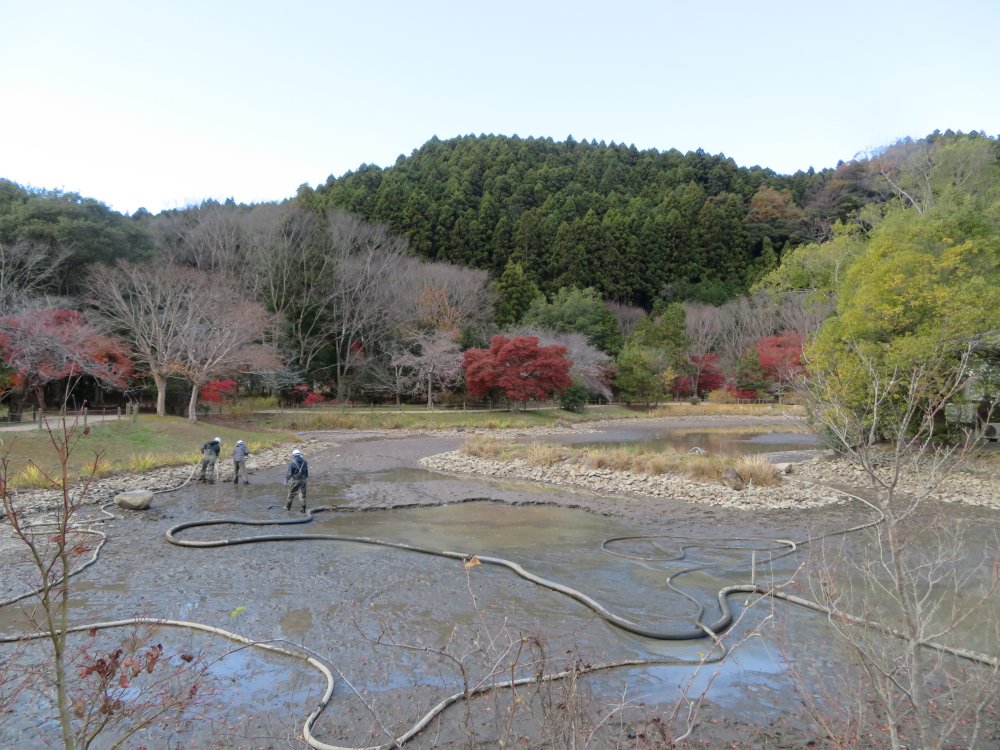
It appeared that some part of the restoration work on the pond was still ongoing.
Once past the admission office, the Amida-do comes into sight directly in front on the other side of a bridge. The maple tree leaves had all turned beautifully red.
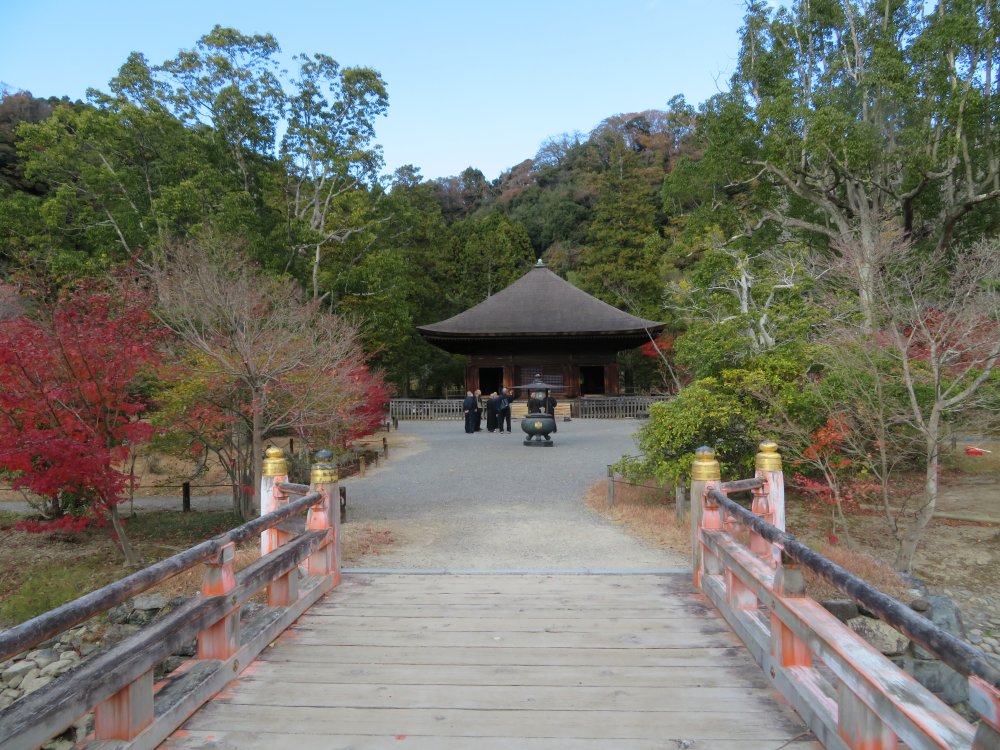
Once past the admission office, the Amida-do comes into sight directly in front on the other side of a bridge.
We crossed the bridge to come in front of the Amida-do. As can be seen from the aerial photo provided by the temple, the Amida-do is situated on a rectangular piece of land jutting into the northern side of the pond.
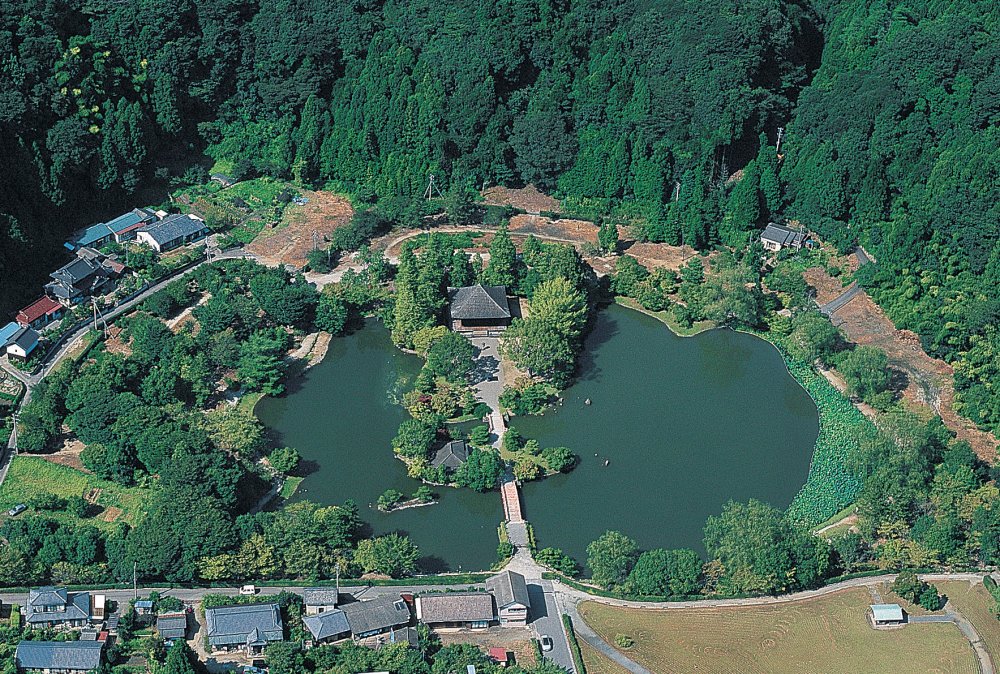
The Amida-do is situated on a rectangular piece of land jutting into the northern side of the pond.
We then entered the Amida-do. The principal statue is a statue of Amida Nyorai, with four supporting standing statues in front (from left to right, Tamonten, Seishi Bosatsu, Kanzeon Bosatsu, Jikokuten). All statues are made of joined woodblocks (yosegi-zukuri), dating back to the Heian Period, and designated as important cultural properties (I'm afraid the temple does not allow any photography inside the Amida-do, nor any reproduction of images. Compared with the Jodo Teiens in Hiraizumi, where only a limited number or no temple buildings at all have survived, the paradise garden of Shiramizu Amida-do, although smaller in scale, has retained its original building and features, making it easier to understand the Pure Land garden concept.
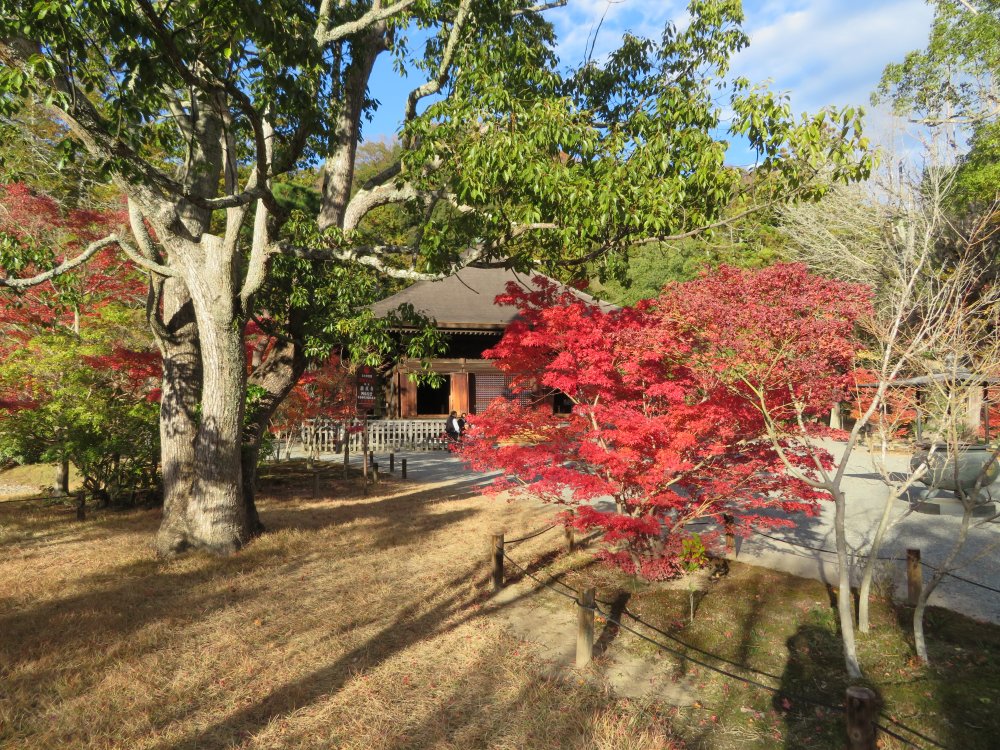
Shiramizu Amida-do has retained its original building and features, making it easier to understand the Pure Land garden concept.
I left the Amida-do and went west from the car park for about 100 meters to find Shiramizu Tokiwa Shinto Shrine on the right. This is a shrine dedicated to the deified Tokuhime who ordered the construction of the Amida-do and Jodo Teien. The shrine is located about 20 steps up from road level. According to the description provided at the bottom of the steps, Tokuhime was benevolent, contributed to the creation of farmland in the region, and came to be worshipped as a deity.
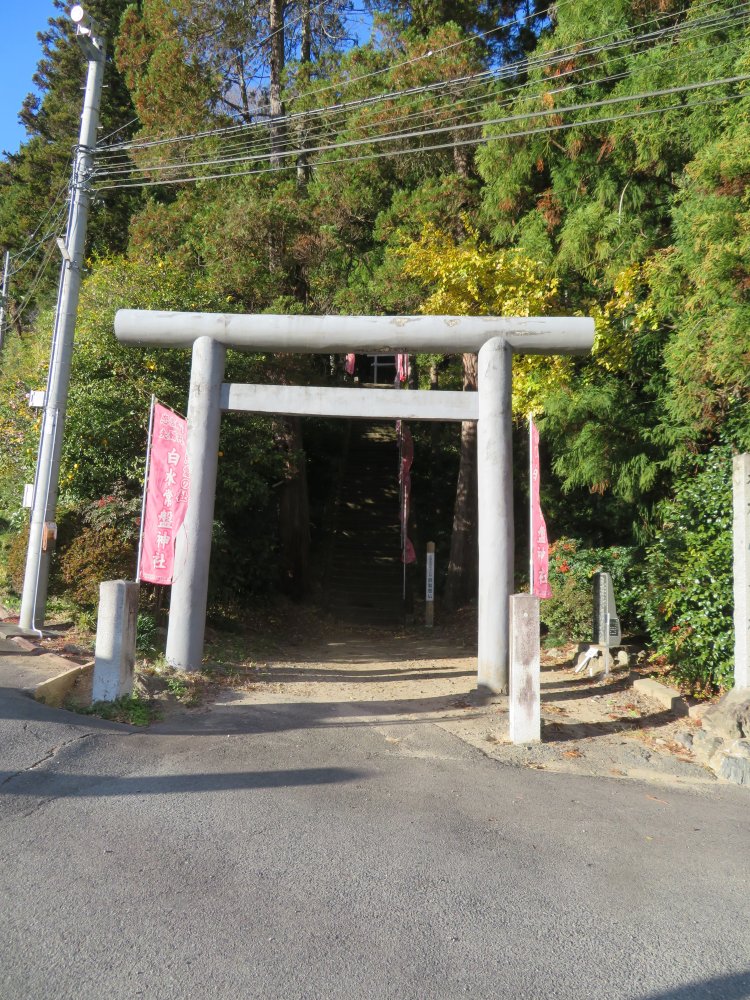
Shiramizu Tokiwa Shinto Shrine is dedicated to the deified Tokuhime who ordered the construction of the Amida-do and Jodo Teien.
The description also explains that the shrine was originally situated on the east side of Amida-do, but was relocated to the current site in 1883, following the edict ordering the separation of Shinto and Buddhism issued in 1868. The visit to Shiraishi Amida-do turned out to be much more rewarding than expected.
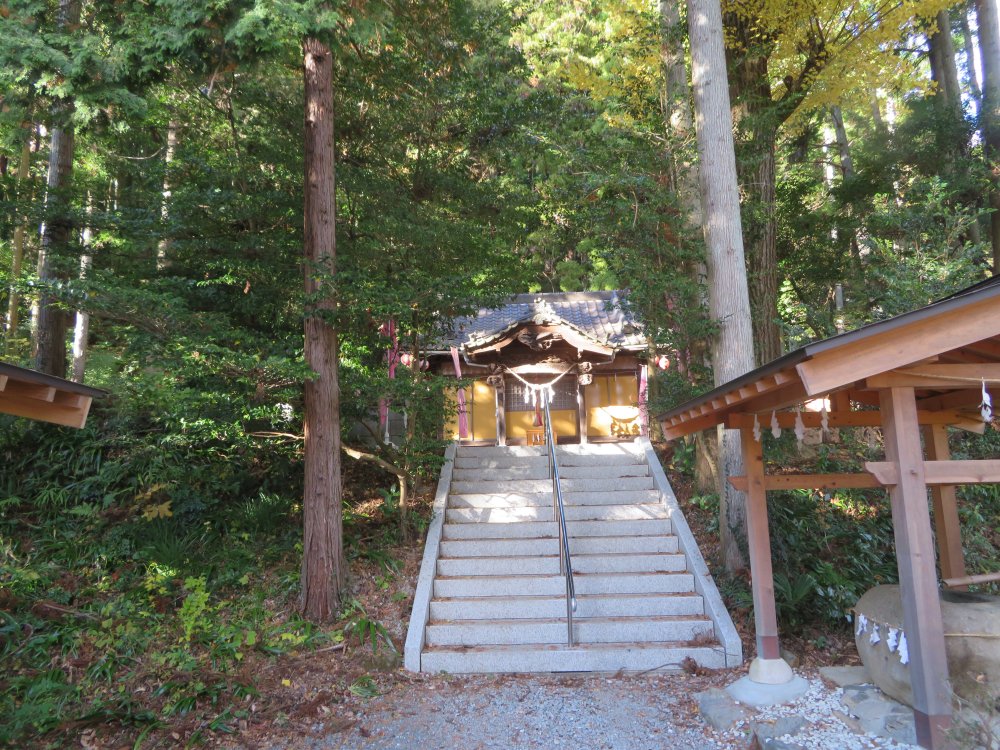
The shrine is located about 20 steps up from road level.